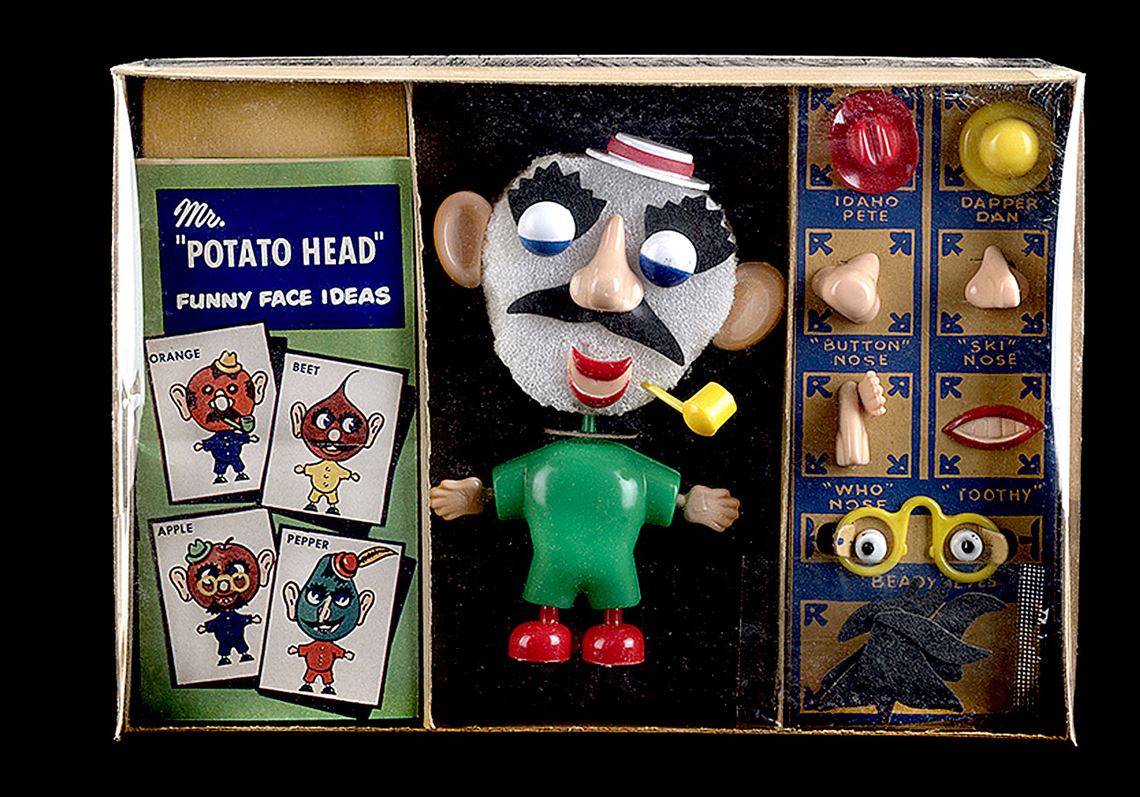With the invention of Mr. Potato Head, the timeless toy spud, parents finally gave their kids permission to “play with their food.”
In 1949, inventor George Lerner approached toy companies with his vision for transforming fruits and vegetables into funny-faced companions. He initially had trouble selling the idea, as memories of World War II rationing still lingered and playing with food seemed wasteful to consumers.
Despite the initial rejections, Lerner eventually sold Merrill Hassenfeld (son of Henry Hassenfeld, a founder of the company that became Hasbro) on his idea. The Mr. Potato Head Funny-Face Kit hit the market in 1952 and contained 30 parts — a body, hands, feet, ears, two mouths, two pairs of eyes, four noses, three hats, eyeglasses, a tobacco pipe, and eight pieces of felt that looked like hair. Kids had to pester their elders for potatoes, onions, peppers, carrots, oranges, apples — anything that would hold up to being stabbed by pronged plastic parts.
On April 20, 1952, Mr. Potato Head became the first toy to be advertised on television and changed how toys were marketed. The kit became an immediate hit, with more than 1,000,000 sold in the first year. By the following year, additional kits and accessories were added to the line, including Mrs. Potato Head along with her son, Spud, and her daughter, Yam.
With parents complaining of rotting food and government regulations requiring the parts to be less sharp (and tougher to insert into a real vegetable), the company introduced a plastic potato body in 1964.
Mr. Potato Head’s fame has only increased in recent years, from its inclusion in the popular “Toy Story” movies to countless versions based on characters in sports, movies, and cartoons.
Visitors to the Heinz History Center’s new “Toys of the ’50s, ’60s and ’70s” exhibition can see one of George Lerner’s original 1952 Mr. Potato Head Funny-Face Kits, on loan from the Smithsonian Museum of American History, along with nearly 500 legendary toys, from Barbie and Gumby to Hot Wheels and Star Wars. For more information, please visit www.heinzhistorycenter.org.
First Published: March 10, 2016, 5:00 a.m.
















